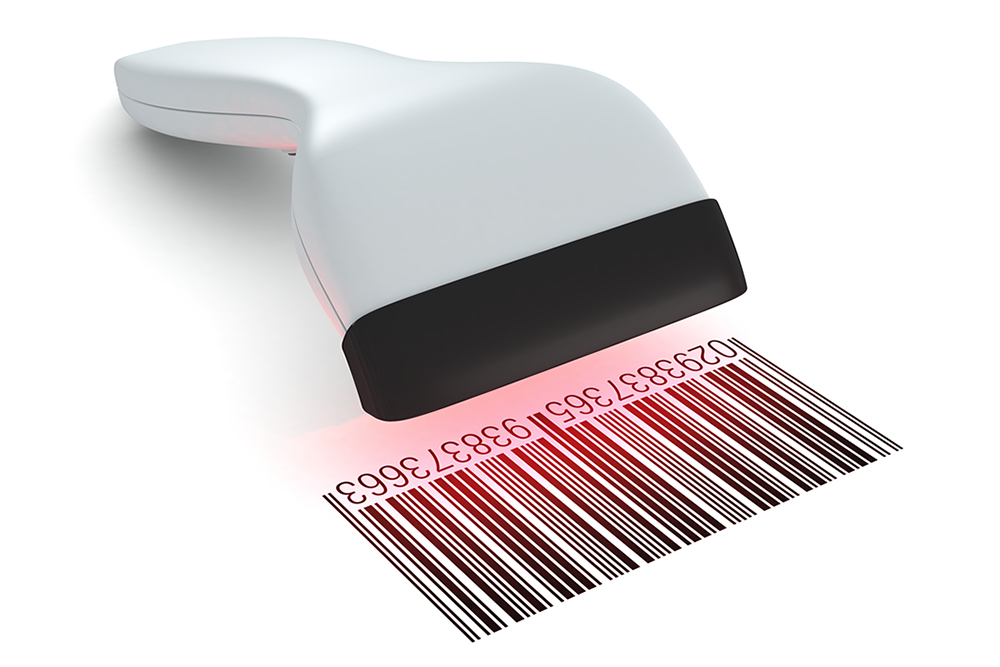Barcodes and ERP – Get the best results

Nowadays, barcodes are found on everything, from retail products and food packaging through to medical supplies, books and even ID cards. We’re so familiar with them that we happily scan our own groceries at the supermarket or check in at locations, as well as for contact tracing purposes, and multiple other uses.
But for manufacturers, the barcode has been an even bigger game changer, enabling greater efficiency, speed and accuracy across the business. So when selecting an ERP system to manage your business operations, you want to be very sure it has the capacity to integrate barcodes. In this article, we’ll take a look at the key benefits that can be achieved by using a barcode system with ERP and where E-Max ERP uses barcodes to save our customers time and money.
What are barcodes?
Barcodes are a way of representing data, generally through linear (1D) or two-dimensional (2D) machine-readable graphics. These can be scanned by an optical reader to give information about the object that bears the code. They are widely used in various industries for inventory, tracking or identification of products.
The beauty of barcodes is that they can store more data than other comparable technologies encoding up to 25 alphanumeric characters on a narrow square on the package, which is more than enough for most identification purposes. Data that can be stored on a barcode includes product descriptions, price, weight, composition, manufacture date, expiry date, but can also refer to individuals, ie name, job description, contact details, etc.
Why use barcodes in manufacturing
The over-arching reasons that so many manufacturers use barcodes in manufacturing is to improve speed and accuracy. Barcodes help the workforce keep track of inventory and reduce errors on the shop floor.
Inventory tracking is probably the most common driver for introducing a barcode system. Items can be logged as soon as they arrive at stores and once again when they leave the warehouse. This provides an accurate inventory, so low stock levels can be identified and reorders placed, thus avoiding delays caused from waiting on new stock to arrive.
Locations within the warehouse can also be included on barcodes, which offers quicker fulfilment and lower labour costs. Because using a barcode scanner is very easy, less employee training is required to get new staff familiar with inventory procedures, etc.
Using barcodes also significantly reduces the risk of human error. It is a lot easier – and much faster – to simply scan a barcode than it is to input a string of numbers. Products can also be doubled checked easily to ensure the right item has been selected and because barcodes are usually held in a central source, ie an ERP system, the product data is instantly available.
With a barcode system in place, the reliability and integrity of stock data is much higher, giving management greater confidence to make important business decisions.
And throw into the mix the very affordable cost of barcode scanners which, combined with the above, really makes it a no-brainer as to why manufacturers are increasingly choosing to implement the use of barcodes within their business.
How does E-Max ERP use barcodes
To achieve the benefits above and more, a barcode system works best when incorporated into a business-wide system like ERP. Data is collected efficiently and flows across the entire business smoothly.
E-Max ERP promotes the use of barcodes in manufacturing, primarily in inventory control and on the shop floor. Using E-Max ERP’s barcoding functionality allows batches / lots of Inventory to be allocated a barcode which can be used to quickly and accurately book stock in and out.
E-Max SFDC (Shop Floor Data Collection) module also makes use of barcodes for time and attendance i.e. clocking in and clocking out. This can easily be performed using an employee badge (with barcode) which can be produced within the system through our HR functionality.
Clocking on and off specific jobs for labour and resource costing purposes is also simple. To gather the data required for costing, barcodes can be produced and allocated to the employee, job (work order), operation or task, and the resource or machine being used. Scanning these four barcodes is all that is required to start a time booking, whilst a single scan of the same employee badge will end the time booking and post it to E-Max ERP.
This is a huge time saving from manual entry of time sheets and provides live real time data for resource and employee utilisation. This data also feeds into job costing, providing critical real time information on the progress of current jobs on the shop floor.
To find out how else you can use barcodes and labels in E-Max ERP, chat to our team on 0808 109 2035, drop us a message or visit some of the other areas of our website. If you want to see in practice how an ERP system can do all of the above actions, then our team would be happy to arrange a no obligation customised demo at a time convenient to you.
